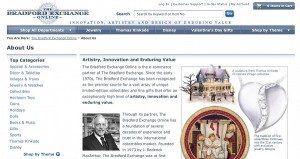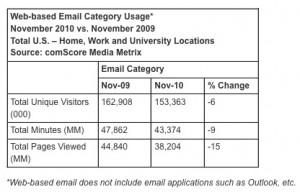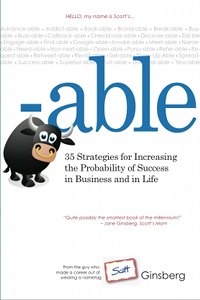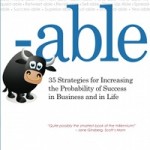Posted by Elena del Valle on February 9, 2011

BradfordExchange.com, the most visited jewelry website
Americans hit the web with gusto this past holiday season. December 2010 saw an increase of 80 percent in retails site visits compared to the same time of year in 2009, according to comScore, Inc., a digital metrics company. According to a company spokesperson 85 percent of Americans visited an online retail site this past holiday season. Selling flowers or cards online? You probably did well in December.
The second retail category in online growth was digital seasons greetings with a 32 percent growth and 27.4 million visitors. Buyers of flowers, gifts and greetings were active during the last month of the year; 36.5 million visitors browsed and bought gifts online. Some items required shipping causing a spike in shipping site visits; 33.6 million Americans visited a shipping site in December, up 29 percent from the prior month.
AmericanGreetings Property was the category leader with 10.6 million unique visitors in December (up 28 percent) followed by Gifts.com with 7.7 million visitors, (up 36 percent), Hallmark with 3.8 million (up 10 percent) and 1-800Flowers.com, Inc. with 2.4 million (up 40 percent). ProFlowers.com more than doubled its audience in December, attracting 2.1 million visitors.
MyFunCards.com was the top e-card site with 7.1 million unique visitors (up 77 percent). Next was AG Interactive with 5.9 million visitors, a 47-percent increase. Evite.com came in third with 5.4 million, and 123Greetings.com with 3.3 million visitors (up 35 percent) was next.
Did you dream or splurge? Browse or buy yourself or a loved one jewelry? You were in good company. After watching their pennies during the recession many shoppers bought luxury goods this holiday season, resulting in an all-time high of 26.2 million unique visitors to Jewelry/Luxury Goods/Accessories sites that month.
BradfordExchange.com took the top spot in the category with 2.8 million unique visitors in December (up 15 percent), followed by Zale Corporation with 2.3 million visitors (up 26 percent), Coach.com with 2.1 million (up 14 percent) and Swarovski.com with 2.0 million (up 13 percent), according to comScore.
Posted by Elena del Valle on February 8, 2011
Information provided by our Event Partner.
Extra 10% Off for HispanicMPR Readers! Use code HMPR.

Horowitz Associates, Inc.’s 11th Annual Multicutural Media for Multicultural America Forum
March 16, 2011 | The Roosevelt Hotel, NYC
Leveraging Culture To Attract Audiences In A Competitive, Multiplatform Environment
Today’s multiplatform, multicultural environment is a game-changer for the TV industry.
It used to be all about “share of viewing”… now, it’s “share of culture.”
Today’s general audience is fragmented by multiple screens, influenced by social media, and in control of their consumer experience. This new audience is defined by its diversity, and is involved with both mainstream and culturally-relevant content.
Now in its 11th year, this annual Forum is THE venue for learning about trends that affect and influence your viewers and your audiences—America’s multicultural consumers. Come to the Forum to get the latest research on the attitudes and behaviors of multicultural audiences especially as it applies to pay TV, broadband, and mobile platforms. This Forum has become the signature event where programmers, advertisers, agencies, and pay TV companies discuss strategies for capturing and retaining audiences and subscribers in multicultural America.
Speakers
Gloria Constanza, Partner, Chief Contact Strategist, d exposito & Partners
Glenn Enoch – Vice President, Integrated Media Research, ESPN
Saul Gitlin, EVP, Strategic Services, Kang & Lee
Joe Lawson, Director of Content Strategy & Acquisition, Verizon Fios Content Team
Carolina Padilla, Senior Director, DIRECTV Más & WorldDirect
Marla Skiko, Sr. VP, Director of Digital Innovation, Tapestry
Curtis Symonds, CEO, HBCU Network
…and more!
Register early and save—early bird discount $249 (through February 23)! Enter code HMPR online at www.multiculturalmediaforum.com/discount.php and receive and extra 10% off! For more information and sponsorship opportunities, please contact us at 914-834-5999 or adrianaw@horowitzassociates.com.
Posted by Elena del Valle on February 7, 2011

Click to enlarge
Graphic: comScore, Inc.
Emails reach more than 70 percent of the U.S online population each month. And, in November 2010, more than 153 million people visited web-based email providers, according to an online data company. Although email remains one of the most popular online activities are people relying less on web based email systems (that excludes applications like Outlook and Thunderbird) and more on mobile email?
A November 2010 comScore study indicates that may be happening. The study found the number of visitors to web based email sites declined 6 percent during that month compared to the previous year. During the same time period, the number of users accessing email via their mobile devices grew 36 percent.
In terms of engagement, the company’s analysts believe overall time spent in the email category declined 9 percent, while total pages viewed dropped 15 percent. Could part of the shift from web based email to mobile email and the level of engagement be the result of higher unemployment nationwide? Is it possible fewer people are accessing emails on the web and surfing online while working because there are fewer people employed?
Although the company’s analysts concluded there was a general change in email related behavior across age groups below 55 they believe young email users between the ages of 12-17 showed the sharpest decline in usage of web based email during the past year. They believe the number of visitors from this age segment declined 24 percent and engagement dropped by half as total minutes fell 48 percent and total pages dropped 53 percent.
There was a greater drop in usage among men; total email minutes for that period dropped 12 percent for men compared to 7 percent for women. On the other hand, use of web based email increase among older adults. Among those 55 to 64 accessing web based email increased 15 percent with similar gains in engagement; users older than 65 experienced gains across all three metrics.
When it came to mobile email in November 2010, 30 percent of all mobile subscribers (70.1 million mobile users, according to their estimates) used a mobile phone to read emails. That was an approximate increase of 36 percent from the previous year, the comScore researchers believe. Adults between 25 and 34 years old were 60 percent more likely to access email than other mobile users; those between the ages of 18-24 were 46 percent more likely to do so than older mobile phone owners. Men were 14 percent more likely to use email on the mobile phones.
ComScore, Inc., a digital measurement company, relied on data from the company’s comScore Media Metrix, which relies on panel-based and website server-based metrics, and MobiLens, a mobile media measurement tool, for the study. The habits of users of mobile devices aged 13 and older were examined in the study.
Posted by Elena del Valle on February 4, 2011

-able book cover
Photos: Scott Ginsberg
Scott Ginsberg, a resident of Saint Louis, Missouri, has been wearing a name tag for ten years in a row. It started out as as a way to teach people how to overcome their shyness and the awkwardness of making the first networking introduction. Along the way, he learned how to be approachable and how to make being approachable profitable.
In his most recent book, -able 35 Strategies for Increasing the Probability of Success in Business and in Life ($19.95), published last year he shares 35 strategies he thinks can help readers increase their probability of success in business and in life. The suggestions are described with sometimes odd seeming phrases such as How to be more findable than a smile at a nudist colony; How to be more referable than an attorney hoped up on sodium pentothal; and How to be more sellable than a case of Coors Light at a Colorado Rockies tailgate party.
Some of the concepts he discusses include the thought that ideas are free and execution is priceless. He believes more is better and advises that readers be “dangerously prolific” and “refuse to slow down long enough for anyone to catch up.” Be fast, produce a lot, push many concepts to fruition and do it consistently, is his advice.

Author Scott Ginsberg
He also believes that not knowing how to do something should not stop readers. Better to move forward than to not move at all; he believes this is true even if you are not sure how or in what direction to move as long as you move. “Otherwise procrastination – the redneck second cousin of patience – will rob you of the motivation you need to carry in the cavalry charge. Finished is the new perfect,” he says.
Ginsberg is the author of twelve books including Hello, my name is Scott, The Power of Approachability, How to be That Guy and Make a Name for Yourself.

Click to buy -Able
Comments:
Filed Under: Books
Posted by Elena del Valle on February 2, 2011
By Laura Scheiber
Co-author Unequal Fortunes

Laura Scheiber, co-author, Unequal Fortunes
Arthur Levine and I recently wrote a book called Unequal Fortunes: Snapshots from the South Bronx (see Fellowship foundation leader, assistant examine challenges faced by South Bronx youth). It focuses on three Latino teenagers coming of age in one of the poorest neighborhoods in the nation. For ten years Carlos, Leo, and Juan Carlos shared their worlds with us. It was a scary place where kids went to more funerals than graduation parties. Drug dealers were on every corner and gangs ruled the streets. Kids were forced to go to local schools with inadequate resources, under-qualified teachers, and a high staff turnover rate. The outcome was not surprising: half of the children in the neighborhood would never graduate from high school. By 16 years old, Carlos, Leo and Juan Carlos could count on one hand the number of friends who graduated from high school. Their other friends were either working minimum-wage jobs, unemployed, in jail, or dead.
Click here to read the entire article Make the world a better place for you and your family

















